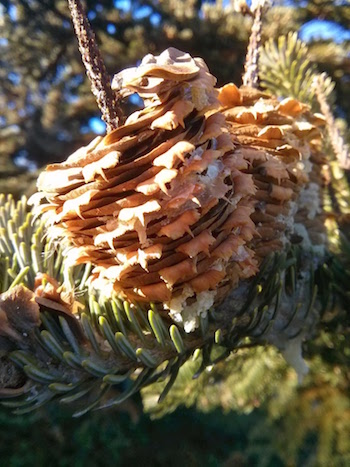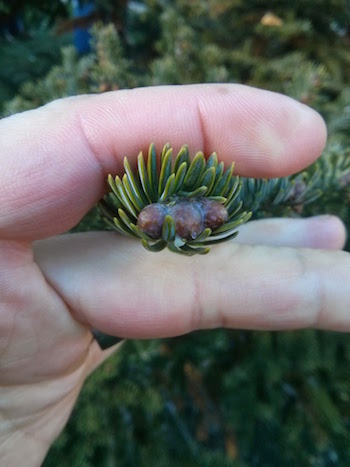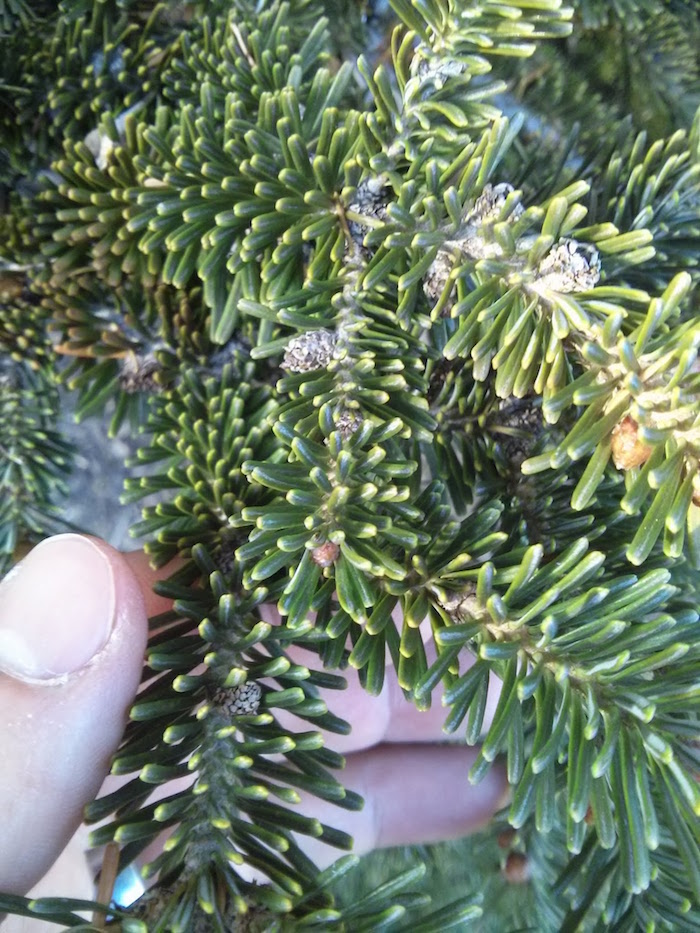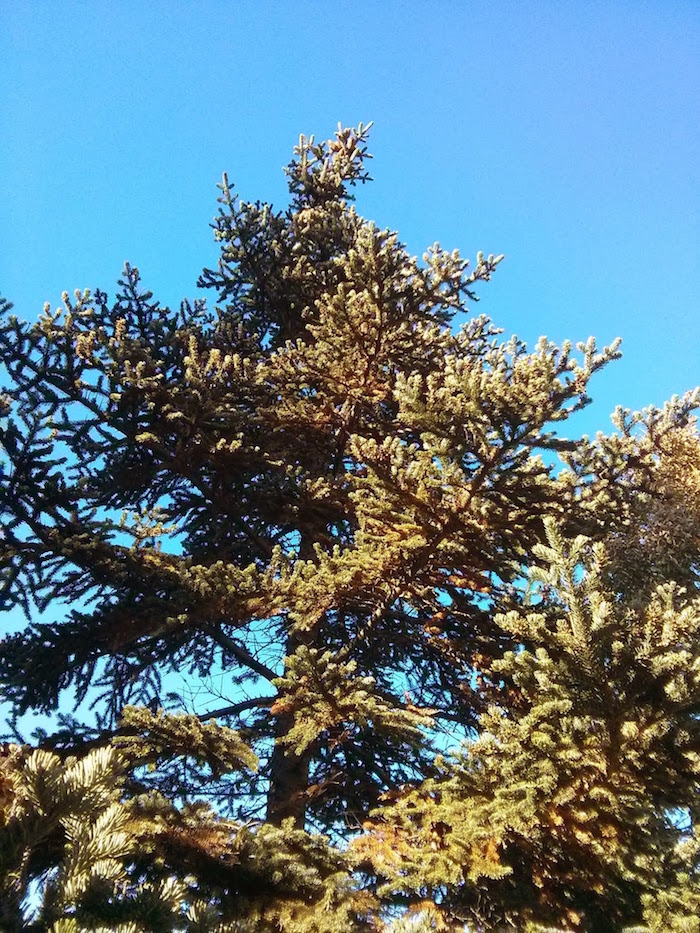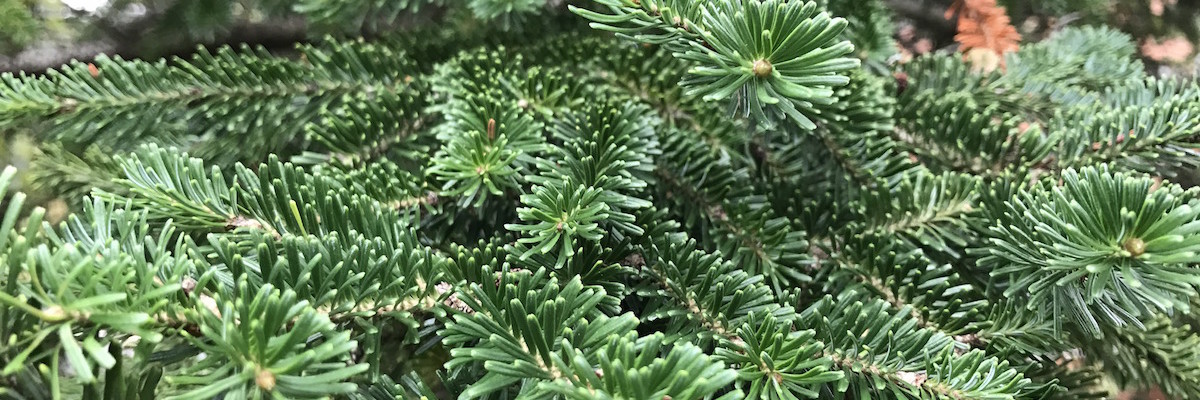
Description:
Fraser Fir is rarely found in the wild, but is one of the most popular Christmas trees in the United States. Needles are arranged spirally around the stem, and are dark green, shiny, and about 1” long. The underside of the needles has two white bands. Cones are purplish and grow upright from the stem. Bark is thin and smooth, with many resinous blisters that ooze tree resin.
Fraser fir’s native range is a very small area in Virginia, Tennessee, and North Carolina, but the tree now grows all around the country in Christmas tree plantations. The tree’s form, pleasant odor, and color make it popular, and it is often the species used for the White House Christmas tree.
Dr. Vera Krischik of the Department of Entomology has conducted numerous research projects on pests of Christmas trees, including Fraser Firs. As of 2017, this particular tree is the only Fraser Fir planted on the campuses of the University of Minnesota-Twin Cities Campus. It was planted on 31 May 1997.
Issues:
Fraser firs do not tolerate salt damage well and therefore are not good for street trees in snowy areas. Balsam woolly adelgids can also kill trees, and other pests such as bark beetles and spruce budworms can cause problems. Common fungal diseases include root rots and needle rusts.
Other Resources:

